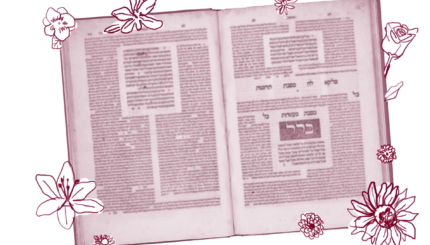Today, let’s take a break from the heavy stuff and follow the Gemara along one of its tangents.
The biblical Joshua’s accomplishments are many: He was one of the 12 spies who scoped out the land of Canaan after the Exodus, he served as Moses’ successor and he led the conquest of Jericho (where trumpets felled the walls) and numerous other cities. But perhaps the most famous story of Joshua is when, during the Battle of Gibeon, he called on the sun to stand still. At God’s command, it obeyed: “Thus the sun halted in midheaven, and did not press on to set, for a whole day.” (Joshua 10:13) God also threw giant hailstones at the enemy, but that’s not the part of the story most people remember.
On today’s daf, in classic talmudic fashion, the rabbis ask: On that fateful day, just how long did the sun loiter in the sky?
Rabbi Yehoshua ben Levi said that it took 24 hours: It traveled across the sky for six hours and stood still for six hours, and again traveled six hours and stood still for six hours, so that the entire matter lasted the duration of an entire day.
The rabbis divided daylight into twelve equal hours. That means that, according to Rabbi Yehoshua ben Levi, the sun was in the sky exactly double the amount of time it normally would have. But there’s another perspective:
Rabbi Elazar said that it lasted 36 hours: The sun traveled for six hours and stood for 12 hours, and again traveled six hours and stood for 12 hours, so that the accumulated time of its suspension was that of an entire day.
Rabbi Elazar understands the verse a little differently here. For him, the sun stood still for a full 24-hour period, so he adds 24 to the 12 hours during which the sun travelled across the sky. This is how he arrives at a calculation of 36 hours.
We have a third take:
Rabbi Shmuel bar Nahmani said: Forty-eight hours elapsed before it set. It traveled six hours and stood for 12 hours, and then traveled six hours and stood for 24 hours, as it is stated: “And the sun stayed in the midst of heaven,” then: “and hastened not to go down for an entire day.”
Rabbi Shmuel reads the verse to convey two different pauses in the sun’s journey. The first clause — “the sun halted in midheaven” — indicates a twelve-hour pause halfway across the arc of the sky; the second — “and did not press on to set for a whole day” — was just before sunset and lasted an entire 24 hours. Add to that the 12 hours the sun normally spends traversing the sky and you get 48 hours of daylight during which time Joshua routed the Israelites’ enemies.
At the conclusion of Joshua’s long and successful battle in the extended daylight, the Bible recounts: “And there was no day like that before it or after it.” (Joshua 10:14) Or maybe there was? Lest the pupil outshine the teacher, the Talmud next relates a time when the sun stopped for Moses. If you’re scratching your head, that’s probably because no such story about Moses is found explicitly in the Torah. Our three mathematical rabbis above come up with three different midrashic readings to prove Moses, like Joshua, merited the sun to stand still, although the specific incident isn’t described. But this raises a problem because, as noted above, the Book of Joshua suggests that stopping the sun was a one-time wonder:
“And there was no day like that before it or after it.” (Joshua 10:14) If you wish, say that the number of hours the sun stood still for Moses were not as many as in the case of Joshua. And if you wish, say instead: When the sun stood still for Moses there were no hailstones, whereas in the case of Joshua there were hailstones, as it is written: “And it came to pass, as they fled from before the children of Israel, while they were in the descent of Beth Horon, that the Lord cast down great stones from heaven upon them into Azeka and they died” (Joshua 10:11).
If the Hebrew Bible says that the sun standing still for Joshua was a unique event, how do we justify the claim that Moses did the same? One possible difference is the length of time, with Moses achieving fewer hours of daylight than Joshua. Another possibility: Only Joshua got the giant hailstones.
Read all of Avodah Zarah 25 on Sefaria.
This piece originally appeared in a My Jewish Learning Daf Yomi email newsletter sent on July 13, 2025. If you are interested in receiving the newsletter, sign up here.
With your help, My Jewish Learning can provide endless opportunities for learning, connection and discovery.



